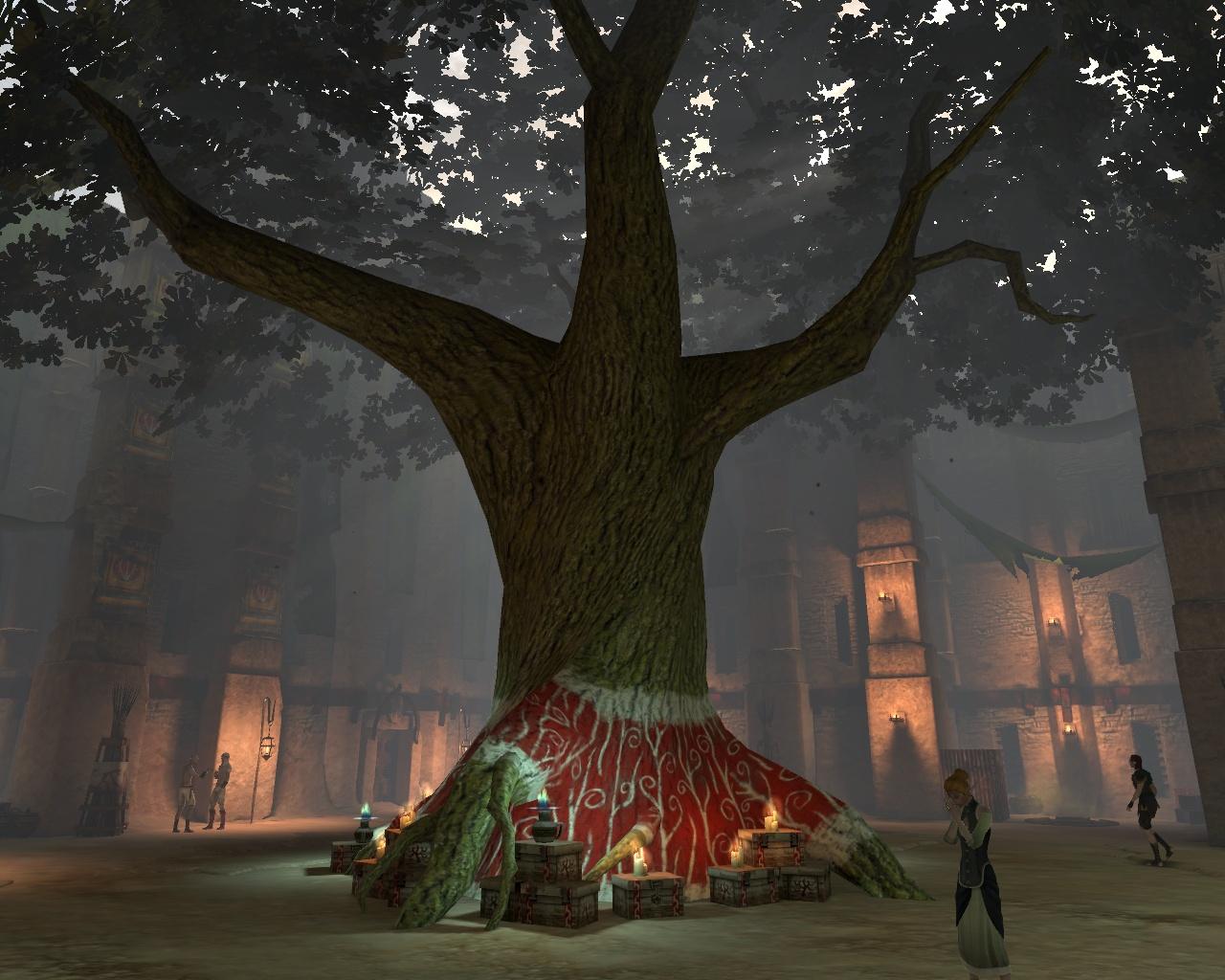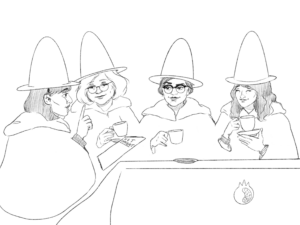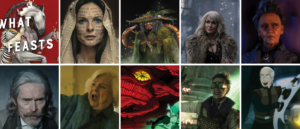While real-world religion can be contentious, fictional religion can be downright fascinating. One of the ways for a story to dish out complex and meaty social commentary is through a make-believe religion. Inventing a religion with mythology, rules, and mores does wonders for a story’s worldbuilding and can add to the dynamics between characters in a very cool way. Below is a list of three instances where the deployment of religion made an interesting statement about the concept of belief itself.
Dragon Age
Theological Lesson: Spiritual practices can adapt and change even through generational trauma.
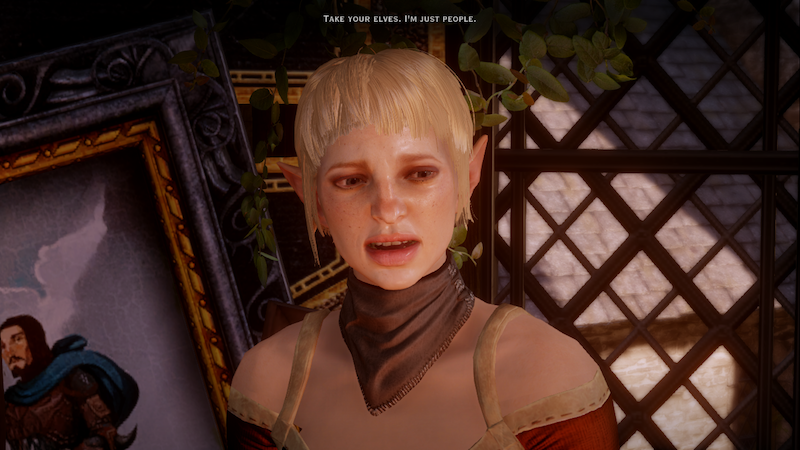
Dragon Age is a medieval-style fantasy video game series rich with lore and many of its themes center on religious belief and practices. The games seem to have something interesting to say about everything from the nature of deities to the manipulation of faith in political machinations.
Humans are the dominant race in the game and their church, the Chantry, is the political engine for much of its world. Long ago in the game’s history, humans fought and won a war against the elves, who were magical, near-immortal beings at one point. Due to their defeat by the humans, many elves have been reduced to scattered nomadic clans. The Dalish elves, as they call themselves, uphold the religion and traditions of their powerful and ancient ancestors to the best of their ability. They have a Keeper who guides them in the ways of their people despite the loss of their ancient knowledge.
Most Dalish clans try to live completely outside of human society, but they aren’t the only elves in the game. There are also the city elves, the descendants of elves who surrendered to human rule. They live in ghettos called alienages and generally endure poorer conditions than their human counterparts.
In the first game in the series, Dragon Age: Origins, you can play as either a Dalish or city elf (or four other character types). The city elf origin is brutal and sad and made me reflective. A thorough player can learn their different sacred rites and objects like the Tree of the People that sits in the center of the alienage, no doubt a tribute to their woods-dwelling ancestors. This was particularly striking to me, as it puts me in the mind of my own status as a woman in the African Diaspora. The religion of my ancestors was systematically stripped away and replaced by the colonizer’s religion. Like the elves in the alienages, a lot of Diasporic cultures have vestiges of the old beliefs, but they are greatly changed by the wages of the Trans-Atlantic Slave Trade. It can be both sad and triumphant to recognize ancestral practices and rituals sprinkled into everyday life.
Dragon Age: Inquisition, the most recent game in the series, includes a companion character named Sera: a city elf with a delightfully bizarre and vulgar sense of humor and manner of speaking. Sera is very driven by her need to even the playing field for the “little people” who suffer when the “big people punch down” on them. Unfortunately, she was raised by a human who not only made her adhere to human religion but also subtly made her feel wrong for being an elf. She carried those lessons into her adulthood, so when the main character meets her, she has an aversion to anything “too elfy.”
Sera is very “power to the people,” so I liked her a lot at first. But her psychological and spiritual scars make it hard for elven main characters to even get her to warm to them. If the character is deemed “too elfy,” it can drive a permanent wedge between them at a point in the game where they have just faced concrete proof of the elven pantheon’s existence. If you somehow push past all her defenses, you learn about her origins and why she’s the way that she is, but you can’t really pull her out of her self hating anti-elf sentiments entirely. She is an elf but she follows the human belief system and deems the elven gods demons.
The tragedy is that Sera’s attitude is not an unfamiliar one. Ask a sanctified Black Christian about Vodun (Voodoo) and you’d be certain to get an earful about demons as well. Everything from Black congregations praying to white icons to my late Nana’s distaste for anything “too Black” is a reminder that colonialism’s scars run deep. The sharing of authentic cultural practices — even a watered down version — can be a healing balm.
Star Trek: Deep Space Nine
Theological Lesson: Empirical reality is no match for religious belief when the two go head-to-head.

Star Trek: Deep Space Nine is the most distinct offering in the Star Trek canon, and that’s not just because it takes place aboard a space station orbiting the alien planet of Bajor as opposed to a starship exploring the farthest reaches of known space. Take, for instance, the way the show handled the commander of the station, Benjamin Sisko becoming a revered figure in the Bajoran religion. Bajorans started calling him the Emissary because he was the only mortal person able to communicate with the noncorporeal aliens that live outside linear time who the Bajorans worshiped as gods.
Like any Starfleet officer worth his weight in gold-pressed latinum, Sisko does everything he can to distance himself from the mantle. That was, until the events of Season 4 Episode 17, “Accession.” A revered Bajoran poet shows up on the station displaced from his own time, claiming the title of Emissary. Relieved, Sisko gives up his rights to the position. One of the most interesting parts of this episode is a conversation between the Bajoran First Officer, Kira Nerys, and Security Chief Odo just before the new Emissary addresses the masses. Kira indicates she believes Sisko was both the Emissary and not the Emissary at the same time. While trying to explain, she laughs and offers a self-conscious hand wave. Then they have this exchange:
Odo: Forgive me, Major, I don’t mean to be difficult, but your faith seems to have led you to something of a contradiction.
Kira: I don’t see it as a contradiction.
Odo: I don’t understand.
[She sobers and her voice firms with conviction.]
Kira: That’s the thing about faith. If you don’t have it, you can’t understand it. And if you do, no explanation is necessary.
Her perspective flies in the face of logic, and as a rational, methodical being, Odo will never understand it even though he has great esteem for his friend.
Facts are things that are verifiable, but religious beliefs eschew that constraint. Faith becomes fact to the faithful, no verification necessary. As the episode unfolds, the “new Emissary” insists on reinstituting Bajor’s old caste system. Kira is willing to “walk the path that the Prophets laid out for [her]” despite the many material reasons why it’s a bad idea. She is willing to sacrifice the military career she loves to pursue art, which she hates and has no aptitude for. Kira explains to Sisko that he had the same power to rewrite the path of Bajorans when he was Emissary. Since this whole incident was an exercise set up by the Bajorans’ gods to light a fire under Sisko, Kira isn’t forced to see her life-altering decisions through, but she was prepared to do so because faith renders the illogical intrinsic.
Killjoys
Theological Lesson: Sacred rituals can spring from practical roots.
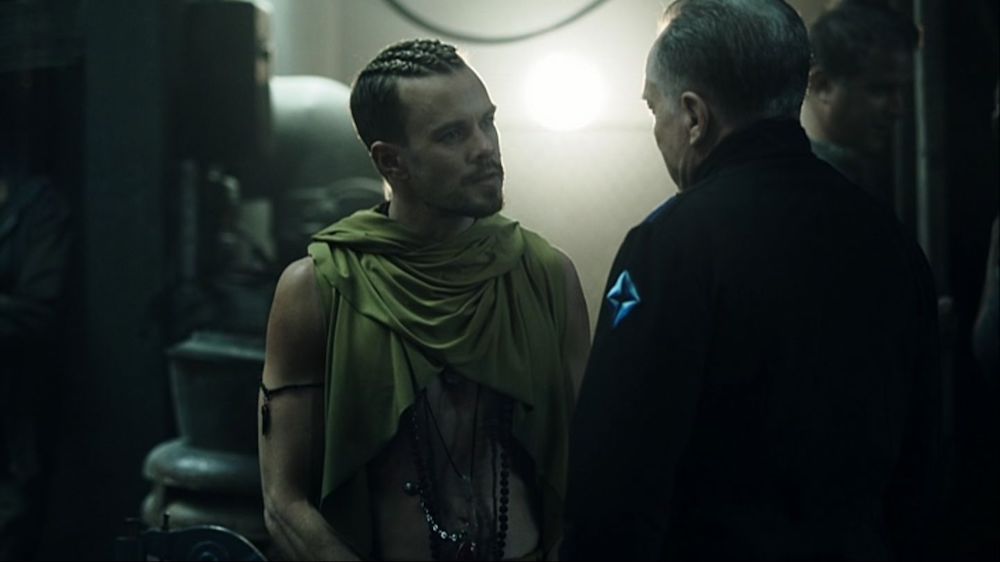
[Spoiler Alert: While no individual plots are spoiled, big arc revelations for seasons 2 & 3 are spoiled out of necessity. Go get caught up on SYFY or Space’s website before proceeding.]
In Killjoys, religion isn’t showcased quite as prevalently as it is in Deep Space 9 or Dragon Age, but this TV series does explore an interesting concept: the practicality behind some religious rites. The series introduces an order of monks called the Scarbacks whose theology is based on cutting and piercing themselves as a penance to relieve their followers from sin. For the entirety of the first season these monks are background color, but as the series progresses, it’s clear this spiritual order and its rituals hold a deeper meaning.
In the backstory of the show, a parasitic alien plasma started spreading throughout the star system. The plasma takes over human hosts creating beings called Hullen. Their brain chemistry changes. The plasma deadens the host’s empathy and connection to others while compelling them to propagate the Hullen species by wiping out humans and replacing them with more Hullen. Nasty stuff. The other important alteration is their physiology: hosts become stronger, heal instantly from injury, and are immortal. Suddenly an order of monks whose main spiritual tenant is bloodletting makes a lot of sense.
What was born as a necessary form of authentication in a galaxy where your enemy could show up wearing the body of your best friend, morphed into a mystical rite over the centuries. This is not too different from our world, where animal sacrifice and certain meat prohibitions are rooted in the practical benefits they had for earlier societies and the need to make people comply without question.
One of the Hullen, Aneela, developed rare psionic abilities that made her a fearsome opponent — so much so, that a scripture was written about her in the Scarback religion: “Twelve went to fight the devil in Arkyn, one came back.” This short verse describes a mission wherein 12 monks tried to defeat Aneela on a moon called Arkyn, and only one lived to tell the tale. Learning the actual stories behind religious retellings can be eye-opening. They can also have unexpected consequences as Aneela returns to the Scarbacks’ part of space ready to demonstrate her displeasure at being cast as the devil in their religion.
Fictional religions not only flesh out our favorite fictional worlds, but they have the ability to illuminate aspects of our own world as well. They can highlight the benefits of an unbroken spiritual tradition by depicting the pain of a character who lacks it. They may illustrate how one’s religion could supersede lived experience by having a character literally handwave away paradoxical beliefs. And they might demonstrate that religious texts can double as a coded set of practical instructions or historical accounts. Add to that the verdant ground for conflict that religion provides, and it’s obvious why so many storytellers go that extra mile to create them for their stories.
Featured image source: Dragon Age 2.
